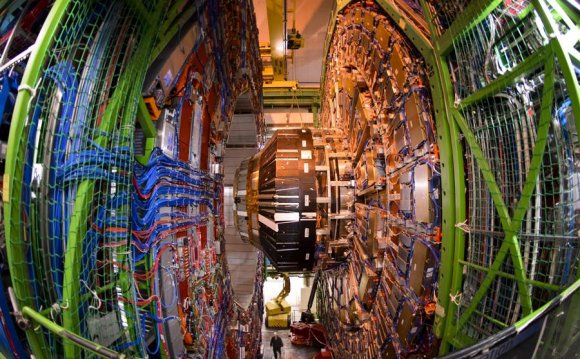
Fun Facts
The Amazing Space Shuttle
The most complex machine ever built, the space shuttle has more than 2.5 million parts, including almost 370 kilometers (230 miles) of wire, more than 1, 060 plumbing valves and connections, over 1, 440 circuit breakers, and more than 27, 000 insulating tiles and thermal blankets.
In 8 minutes after launch, the shuttle accelerates from zero to about nine times as fast as a rifle bullet, or 28, 002.6 kilometers per hour (17, 400 miles per hour), to attain Earth orbit.
The space shuttle weighs more than 2.04 million kilograms (4.5 million pounds) at launch over 1.59 million kilograms (3.5 million pounds) of propellants are entirely consumed in the next 8 minutes.
If the shuttles main engines pumped water instead of fuel, they would drain an average-sized swimming pool every 25 seconds.
Because liquid hydrogen and liquid oxygen fuel the main engines, the majority of exhaust produced is water vapor.

At launch, the shuttles two solid rockets consume more than 9.07 metric tons (10 tons) of fuel each second and produce 44 million horsepower, equal to 14, 700 locomotives.
The three shuttle main engines produce power equivalent to 13 times that produced by the Hoover Dam.
The shuttle's solid rockets burn powdered aluminum as fuel a different form of the same type of material that is used as a foil wrap in most kitchens.
The temperatures inside the shuttles main engines and solid rockets reach more than 3, 315.6 Celsius (6, 000 Fahrenheit), higher than the boiling point of iron, yet the main engines fuel, liquid hydrogen, is the second coldest liquid on Earth at minus 252.8 Celsius (423 Fahrenheit).
The discharge pressure of a shuttle main engine turbopump could send a column of liquid hydrogen 57.9 kilometers (36 miles) into the air.
Temperatures experienced by the shuttle range from as low as minus 156.7 Celsius (minus 250 Fahrenheit) in space to as high as 1, 648 Celsius (3, 000 Fahrenheit) as it re-enters the atmosphere.
YOU MIGHT ALSO LIKE
![The World’s Most Complex Rube Goldberg Machine [Video]](/img/video/the_worlds_most_complex_rube_goldberg.jpg)











